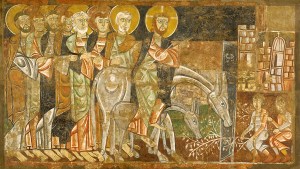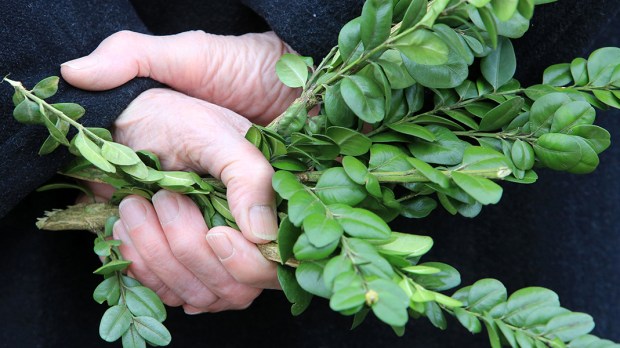During the past several decades it has become customary to use palm branches for the celebration of Palm Sunday. However, this was not always the case, as palms were not mass-grown as they are today.
Local plants are permitted
In fact, for many centuries Christians all around the world were forced to use local plants as a substitute for palms to commemorate the opening of Holy Week.
According to the Catholic Encyclopedia, “In places where palms cannot be found, branches of olive, box elder, spruce or other trees are used and the ‘Cæremoniale episcoporum’ II, xxi, 2 suggests that in such cases at least little flowers or crosses made of palm be attached to the olive boughs. In Rome olive branches are distributed to the people, while the clergy carry palms frequently dried and twisted into various shapes. In parts of Bavaria large swamp willows, with their catkins, and ornamented with flowers and ribbons, were used.”
Pussy willows are a common tradition in many countries, and in some places it is even called “Pussy Willow Sunday.”
Biblical scholars often translate the branches people used for Jesus’ triumphal entry in generic terms, such as in the Gospel of Matthew, “The very large crowd spread their cloaks on the road, while others cut branches from the trees and strewed them on the road” (Matthew 21:8).
In essence, when palm branches are not available, it is perfectly acceptable to find any type of suitable branch to help commemorate Palm Sunday.
Symbolism behind the tradition
The branches are meant to be a symbolic gesture, symbolizing the need to lay down our hearts before Jesus, allowing him access into our inmost being. This is why, even if you don’t have branches of any sort for your celebration, you can still participate in the spiritual theme of Palm Sunday.
Surrender yourself to Jesus on Palm Sunday and let him enter your heart and home.

Read more:
This Palm Sunday, which Passion character are you?

Read more:
How old is Palm Sunday?

